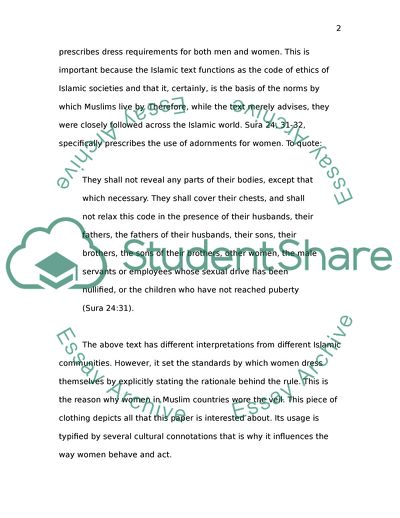Cite this document
(The Veil and Womens Behavior Case Study Example | Topics and Well Written Essays - 1250 words, n.d.)
The Veil and Womens Behavior Case Study Example | Topics and Well Written Essays - 1250 words. https://studentshare.org/culture/1760252-effects-of-clothing-or-dress-on-behavior
The Veil and Womens Behavior Case Study Example | Topics and Well Written Essays - 1250 words. https://studentshare.org/culture/1760252-effects-of-clothing-or-dress-on-behavior
(The Veil and Womens Behavior Case Study Example | Topics and Well Written Essays - 1250 Words)
The Veil and Womens Behavior Case Study Example | Topics and Well Written Essays - 1250 Words. https://studentshare.org/culture/1760252-effects-of-clothing-or-dress-on-behavior.
The Veil and Womens Behavior Case Study Example | Topics and Well Written Essays - 1250 Words. https://studentshare.org/culture/1760252-effects-of-clothing-or-dress-on-behavior.
“The Veil and Womens Behavior Case Study Example | Topics and Well Written Essays - 1250 Words”. https://studentshare.org/culture/1760252-effects-of-clothing-or-dress-on-behavior.


